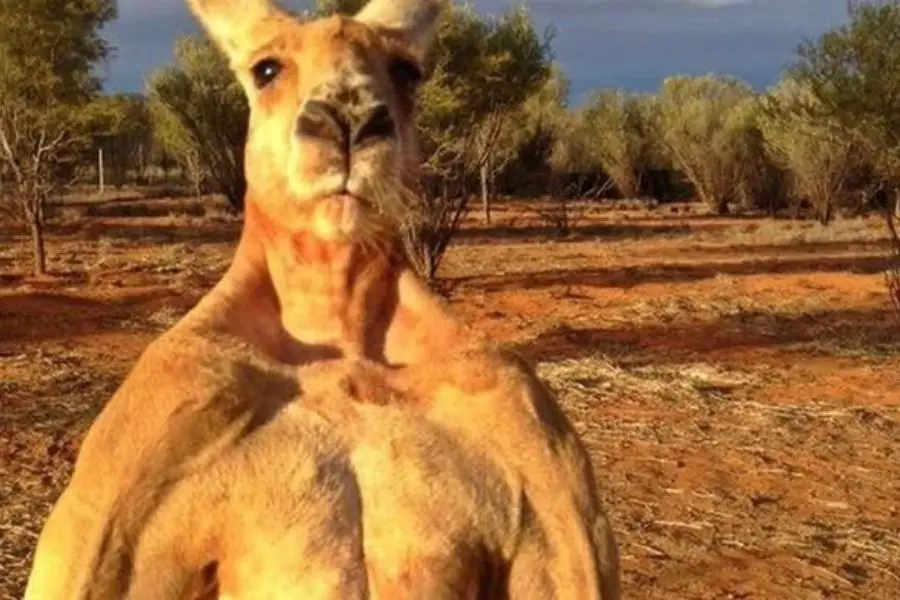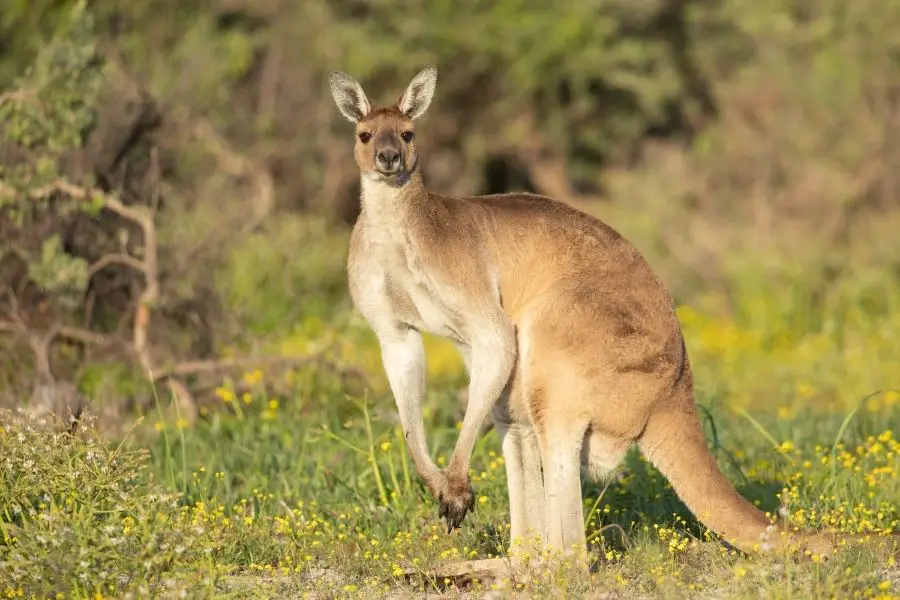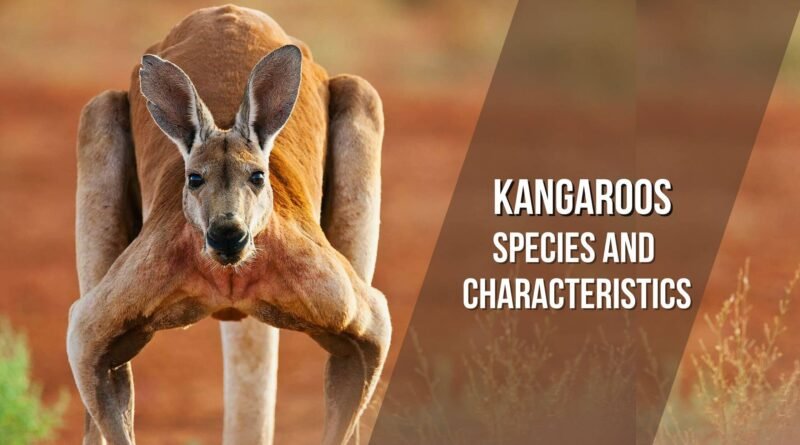Kangaroo Species: Learn about them and their characteristics
Did you know that there are several kangaroo species? And not just a few! The taxonomy of kangaroos is still a complex subject, and while some studies claim there are more than 60 kangaroo species, others say the total is 20. In this article, we will discuss the four main kangaroo species, their characteristics, and some interesting facts. Enjoy reading and have fun!
Family Macropodidae
Members of the Macropodidae family are native to Australia and encompass all marsupials. Marsupials are pouched mammals, with females carrying and nourishing their offspring in an abdominal pouch (marsupium) during the early stages of life. One interesting distinction is that in placental mammals, offspring develop inside the uterus before birth, whereas in marsupials, offspring are born extremely underdeveloped, often lacking fully formed limbs. After birth, they migrate to the mother’s pouch, where they continue their development.
In addition to kangaroo species, the Macropodidae family includes quokkas, wallabies, wallaroos, and tree kangaroos. The family exhibits a wide range of sizes, from the tiny antechinus weighing less than 1.76 ounces to the red kangaroo, which can weigh over 176 pounds. Kangaroos, including the red kangaroo and eastern grey kangaroos, are part of the Xanthopus species group and Brachyotis species group, respectively. They have few natural predators.
The western gray kangaroo and rock wallabies are also prominent members of the Macropodidae family. Kangaroos play a crucial role in maintaining balance within ecosystems, particularly through seed dispersal and selective grazing as herbivorous animals. They inhabit various kangaroo habitats, contributing to the overall biodiversity.
Now let’s talk a little about each of the four main kangaroo species. Let’s go!

Red Kangaroo (Macropus rufus / Osphranter rufus)
Let’s start with the largest kangaroo species and also the largest living marsupial on the planet, the red kangaroo. It has the most easily recognizable face for those of us who live a bit far from its habitat, Australia.
Sexual dimorphism in this kangaroo species is very evident. Adult males can weigh an impressive 198 pounds, while females weigh a maximum of 88 pounds. They also differ significantly in height, with males measuring from 4.5 to 5.9 feet, and females from 27 inches to 3.6 feet. The male’s fur is red, in brick tones, hence its popular name. Females have a bluish-gray color.

They are more active in the late afternoon and at night; their diet is herbivorous, preferring to live in groups, meaning they are social animals. These groups, called “mobs,” vary in size, ranging from a few dozen members to up to 100 individuals. Their teeth are specially developed for cutting and chewing vegetation, such as leaves, fruits, grasses, and shoots.
In the wild, the life expectancy of red kangaroos is 6 to 8 years, but in captivity or sanctuaries, they can live longer.
An example of this is the famous red kangaroo Roger, who became an internet sensation some years ago. Roger was the alpha male of the Alice Springs Kangaroo Sanctuary in northern Australia. He measured 6.5 feet in height and was extremely muscular, with a “hobby” of crushing metal buckets, the containers where his food was served. Roger lived his entire life in the sanctuary after his mother was hit and killed.
He died at the age of 12, weighing 196 pounds.
Red kangaroos are not currently endangered, according to the IUCN.
Eastern Grey Kangaroo (Macropus giganteus)
The eastern grey kangaroo is the most commonly sighted species of kangaroo in regions of Australia, including forests, pastures, plains, and coastal areas. An adult male measures about 4.5 feet and weighs 110 to 154 pounds. In this case, females are also slightly smaller in weight and height.
In terms of behavior, they are very similar to red kangaroos, as they are also more active at night, live in groups called “mobs,” and feed on grasses, leaves, shoots, and fruits.

Fortunately, they are listed by the IUCN as a species of “least concern” regarding extinction.

Western Grey Kangaroo (Macropus fuliginosus)
The western grey kangaroo is native to the southern region of Australia and can be found in various habitats, such as pastures, open or closed forest areas, and even in cities, on golf courses.
Males are larger than females, as is the case with other kangaroo species mentioned earlier. Their weight ranges from 61 to 121 pounds, and their height from 31 inches to 3.6 feet, not including the tail, which is about 3.2 feet long. They have a light brown color, but individuals with reddish shades of dark brown can be found. They have a lighter color from the throat to their abdomen, and their snout is a bit different from other kangaroos, with very fine hairs around it.

Like other kangaroo species, western greys also enjoy a herbivorous diet, feeding on grasses, shrubs, tree bark, and leaves. The times when they are most active are in the morning and late afternoon, spending 6 to 10 hours a day feeding.
Fortunately, western grey kangaroos are not endangered and are classified by the IUCN as “least concern.”

Antilopine Kangaroo (Macropus antilopinus)
The antilopine kangaroo is endemic to Australia and can be found in the central region of the country, including deserts and arid areas of the North. Its name “antilopine” originates from the resemblance these kangaroos have to antelopes, with their long and slender legs. They like to live in savannas, plains, and dunes. This kangaroo species has adapted to arid terrain, with little or almost no water available, and extracts the necessary water for survival from the plants they consume.
As they live in high-temperature areas, they have developed and adapted to withstand this type of adversity. They rest during the day, seeking shelter in shadows to endure the intense heat and come out to feed at night.

The antilopine kangaroo is known for its unique characteristics that set it apart from other kangaroos. They are smaller, of medium size, with adult males weighing around 66 pounds and females around 37 pounds. The average height of an adult male is 31 inches and an adult female around 23 inches. Their fur is dense and short, reddish-brown on the back but with light fur on the belly, which helps reflect heat in the hot regions where they live.
They are social animals, living in not very large groups of about 30 individuals, but older males tend to be solitary. They often form groups, or “troops,” only of females and only of males, but they do not isolate from each other and end up “caring” for each other.

Female Kangaroos
The gestation period of a female kangaroo is relatively short, typically lasting around 30 to 36 days. After this brief period, the underdeveloped joey is born. Smaller than a cherry and weighing less than a gram, the baby kangaroo instinctively finds its way into the mother’s pouch, where it will attach to one of four teats that have begun producing milk.

Once inside the pouch, the joey will continue its development for a significant period, which can range from 120 to 450 days, depending on the species. During this time, the joey remains attached to the mother’s teat, receiving nourishment and protection as it grows. Even after starting to explore outside the pouch, the joey often returns to nurse or seek shelter until it reaches about a year old.

Kangaroos, particularly the red kangaroo, are the largest species of marsupials. They belong to the kangaroo family and are known for their unique behavior and habitat. The word “kangaroo” is often associated with Australia, where kangaroos live and thrive. The mother’s pouch is a remarkable feature of kangaroo anatomy, providing a safe and nurturing environment for the newborn joey. The pouch is made possible by the kangaroo’s elastic strain energy, allowing it to expand and accommodate the growing joey.

Curiosities
• The offspring of any kangaroo species are affectionately called “Joeys.”
• When born, kangaroos are about the size of a grape, measuring about 24 millimeters.
• A kangaroo can run at a speed of over 18 mph and reach a height of 29.5 feet in a single leap!

• Kangaroos can use their tail as a third limb when “walking” slowly.
• In Australia, kangaroos are hunted for their skin and also for meat consumption.
• The kangaroo’s stomach is composed of four main chambers: the rumen, reticulum, omasum, and abomasum. This multi-compartmental structure allows them to make the most of the nutrients in the fibrous foods they consume.
Other lesser-known species of kangaroos
In the following section, we’ll be briefly exploring other, lesser-known species of kangaroos. Each one of these unique species has its own fascinating characteristics, behaviors, and habitats. Let’s venture further into the diverse world of kangaroos and discover what makes each species uniquely captivating.

Tree Kangaroos
Tree kangaroos are a group of marsupials that are native to Papua New Guinea and Australia. They have evolved to live in the tree canopies of rainforests, and as such, have some distinct physical adaptations. Unlike other kangaroo species, tree kangaroos have shorter hind legs, allowing them to easily climb through the dense forest canopies. They also have longer tails that they use as a counterbalance while moving through the trees.
While tree kangaroos are not considered endangered, many of their habitats are threatened by deforestation and human development. As such, conservation efforts are being made to protect these unique and fascinating creatures.

Rat Kangaroos
Rat kangaroos are considered some of the smallest members of the kangaroo family, with many species weighing less than 8 ounces and measuring just a few inches in length. They are found in various regions throughout Australia and New Guinea and are known for their small size, long tails, and ability to hop quickly through dense vegetation.
Unlike other kangaroo species that have long, powerful hind legs, rat kangaroos have shorter and more robust hind legs that are better suited for running through dense brush. They also have sharp claws on their feet, allowing them to easily climb trees and shrubs.

Conclusion
Kangaroos are the true icons of the Australian fauna, a national symbol. With their exceptional jumping ability, these amazing marsupials enchant and surprise us.
Do you agree that whenever we learn a little more about any animal, we feel inspired to share that knowledge and protect the wonderful biodiversity of our planet?
Continue to follow us and until next time! ♥




